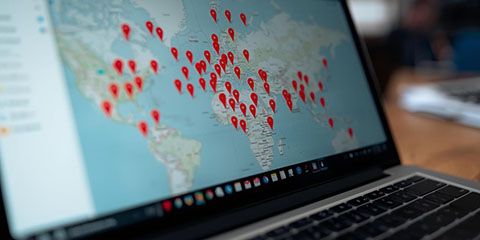How AI and data tools are transforming investigative journalism
JournalismPakistan.com | Published 2 hours ago
Join our WhatsApp channel
Investigative journalism is being reshaped by AI, data visualization, and open-source intelligence, giving reporters new tools to uncover complex stories, verify facts, and improve audience engagement.Summary
NEW YORK — Investigative journalism is entering a new era as artificial intelligence, data visualization, and open-source intelligence become essential tools for reporters worldwide. Newsrooms are increasingly relying on these technologies to analyze large datasets, verify information, and deliver stories that are both accurate and engaging. Experts say that blending traditional reporting skills with these modern tools is becoming critical for producing impactful journalism in an age of information overload.
AI-enhancing investigative capabilities
Artificial intelligence allows journalists to sift through massive quantities of information that would take humans months to process. AI tools can detect anomalies in financial records, flag inconsistencies in public statements, and analyze patterns across social media and government data. For example, AI-driven software has been used to uncover networks of corruption in government procurement and trace complex financial fraud schemes. This automation allows reporters to focus more on verification, context, and narrative building rather than time-consuming data collection.
Data visualization and storytelling
Data visualization is revolutionizing how investigative findings are presented. Reporters are now converting raw datasets into interactive maps, graphs, and dashboards that help audiences understand complex issues such as climate finance, corporate lobbying, or election interference. A well-designed visualization not only increases transparency but also enhances the credibility of a story, making it easier for readers to grasp intricate investigative results. Many news organizations now employ dedicated graphics teams to collaborate with reporters on visually compelling presentations.
Open-source intelligence and cross-border reporting
Open-source intelligence, or OSINT, is empowering journalists to conduct investigations that were once impossible. By leveraging publicly available information, including satellite imagery, company registries, social media activity, and government databases, reporters can track illegal activities, verify claims, and expose corruption across borders. Investigations into environmental crimes, human rights abuses, and transnational crime networks have all benefited from OSINT techniques. The method also supports smaller newsrooms that lack large investigative teams, enabling them to participate in cross-border collaborations.
Challenges and ethical considerations
Despite its advantages, the adoption of AI, data visualization, and OSINT raises ethical and practical concerns. AI algorithms may carry inherent biases, and improper use of public data can inadvertently violate privacy or legal boundaries. Journalists must maintain rigorous verification standards and ensure that automated analyses do not replace human judgment. Many journalism schools now offer courses on data ethics, AI literacy, and OSINT methods to equip emerging reporters with the knowledge required to navigate these challenges responsibly.
Future prospects for investigative journalism
Industry experts predict that investigative journalism in the next decade will increasingly rely on the integration of human expertise and digital tools. Reporters who master AI, data analytics, and OSINT will be better positioned to uncover hidden patterns, hold powerful actors accountable, and produce stories that resonate with audiences. As newsrooms embrace these technologies, collaboration across disciplines, including coding, data science, and traditional reporting, will become the norm, setting a new standard for transparency and public service journalism.
KEY POINTS:
- AI helps journalists analyze massive datasets and detect patterns efficiently
- Data visualization enhances storytelling and strengthens public understanding
- Open-source intelligence supports cross-border and resource-limited investigations
- Ethical considerations and training are essential for responsible technology use
- Investigative journalism is increasingly blending traditional skills with AI and data tools
- Collaboration between reporters, data scientists, and graphics teams is shaping the future of news
PHOTO: AI-generated; for illustrative purposes only
























